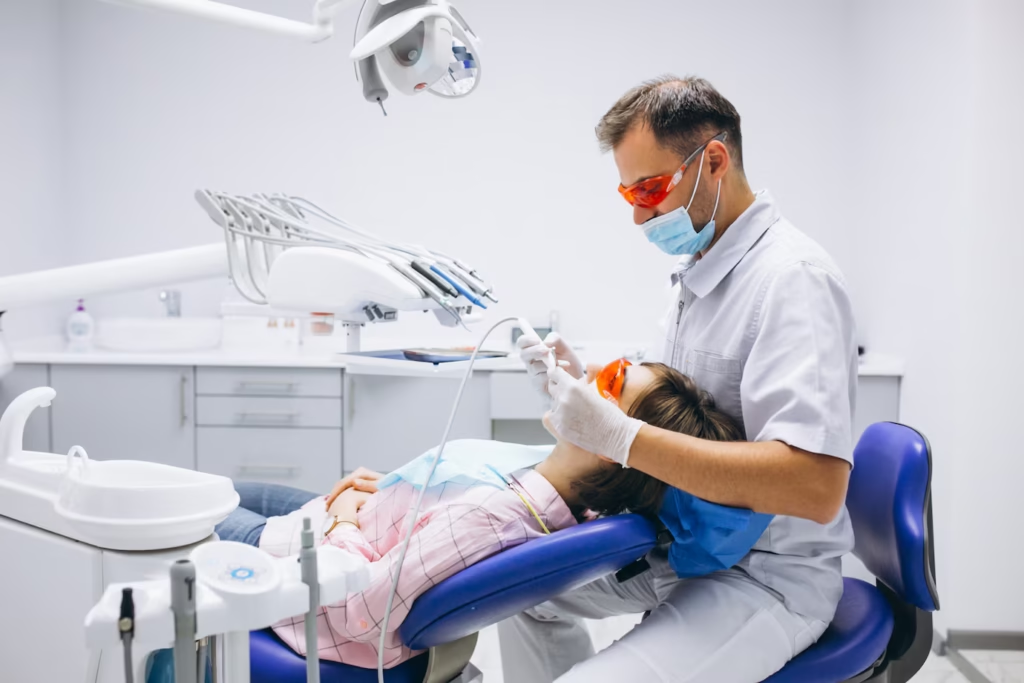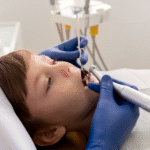Saturday - Wednesday: 9 AM - 10 PM
Thursday: 9 AM - 9 PM
Friday: Closed

March 19, 2025
What Is The Difference Between Restorative And Conservative Dentistry?
It is said that your smile is the first thing someone notices about you. In this situation, having a healthy smile becomes important. It is important that you take care of your smile, and that requires regular brushing and flossing, as well as sometimes even treatments to ensure that there are no issues with your teeth.
In dentistry, there are two main types of dental treatments that all other treatments can be categorized into. Conservative Dentistry focuses more on conserving what is already there, like the natural tooth structure, and Restorative Dentistry focuses more on repairing or restoring what might be harmed.
What Is Conservative Dentistry?
Conservative dentistry, as the name suggests, focuses more on conserving what is naturally occurring. It emphasises the preservation of natural tooth structure while treating decay and minor damage with minimal impact on the surrounding tooth bed and gums. The goal of conservative dentistry is to allow teeth to function naturally while minimising any external damage that can be caused by bacteria and infections. It ensures that the tooth remains functional and intact for as long as possible.
In addition to preserving the natural structure, conservative dentistry often employs modern techniques and materials that prioritise patient comfort and long-term health. Techniques such as minimally invasive procedures and the use of biocompatible materials help achieve restorative goals without compromising the tooth integrity. Furthermore, conservative dentistry encourages regular check-ups and personalized oral hygiene practices, enabling early detection of issues and proactive management of dental health. This holistic approach not only maintains the functionality of teeth but also promotes overall well-being by reducing the need for more invasive treatments in the future.
Common Procedures Under Conservative Dentistry
- Dental Fillings – Dental fillings focus on filling the missing part of the tooth instead of replacing the whole tooth. As a result, the natural structure and nerves connected to the root remain intact making it a part of Conservative Dentistry.
- Fluoride treatments – Flouride treatments are used to strengthen the tooth enamel preserving the natural tooth. They also prevent cavities and early decay.
- Sealants – Sealants, as the name suggests, are used to seal the teeth in the way they are for a few years. They help preserve the tooth for a longer time and prevent any external bacteria from affecting the teeth. With sealants, a layer is added between the teeth and the external bacteria that protects the teeth and destroys the bacteria.
- Inlays and Onlays – Inlays and onlays are used when fillings are lacking. They restore the tooth to its original structure without the need for a crown placement.
What Is Restorative Dentistry?
Restorative dentistry, on the other hand, depends on repairing what is broken or damaged to restore the teeth’s aesthetics and functionality. Generally, when the damage is too severe to be fixed with conservative dentistry, dentists use restorative dentistry to fix the damage and return your smile to its functionality. Where conservative dentistry fails, restorative dentistry fixes the damage and makes it as good as new.
In addition to repairing teeth, restorative dentistry encompasses various techniques and treatments tailored to individual patient needs. These may include crowns, bridges, dentures, and dental implants, each designed to enhance both the appearance and strength of the teeth. The goal of restorative dentistry is not only to repair damage but also to prevent further issues, ensuring long-term oral health and a beautiful, confident smile.
Common Procedures Under Restorative Dentistry
- Crowns – When tooth damage is very severe and it cannot be restored with fillings, inlays or onlays, crowns are the way to go. Dental crowns are a type of cap that is fixed over the existing tooth to restore the tooth. To do this, all the internal damage is first cleaned and filled to minimise bacteria formation.
- Bridges & Implants – Dental bridges are similar to crowns but come in handy when multiple teeth next to each other are damaged. The bridge is placed on these teeth to hide the cavity and damage to the natural teeth. Implants on the other hand are used to replace the old tooth completely. When a tooth is not functional whatsoever, and is causing more damage to the teeth around it, dentists often remove this tooth completely and replace it with an implant to restore the aesthetics and functionality of that tooth.
- Dentures – Dentures are external or removable teeth that can be placed on damaged teeth when needed and stored safely with the patient at other times. They are generally used for multiple missing or damaged teeth.
- Root Canal – A root canal is when the infected pulp of a damaged tooth is removed and replaced by a material that restores the function of that tooth.
Conclusion
Whether you choose restorative dentistry or conservative dentistry to fix your teeth is up to you. But remember that your smile could create a lasting impression on people you meet. To have a bright and perfect smile, contact Diamond Dental today.
Search
Recent Posts
-
Top 10 Benefits of Dental Implants
19, Aug, 2025
-
What Is Tooth Decay? Causes, Symptoms, and Prevention
19, Aug, 2025
Looking for professionals & trusted medical healthcare?
Don't hesitate to contact us.

Contact Us
Get In Touch With Us
© 2024 All Right Reserved














